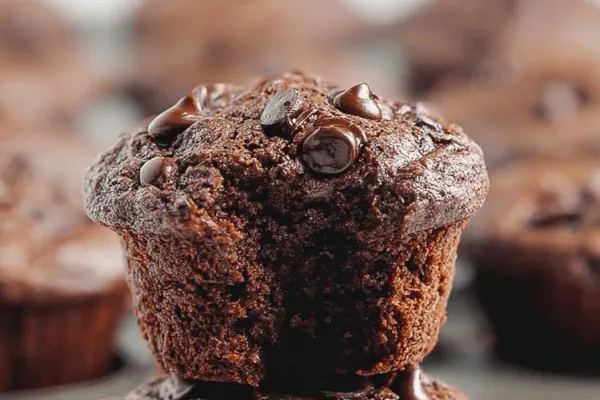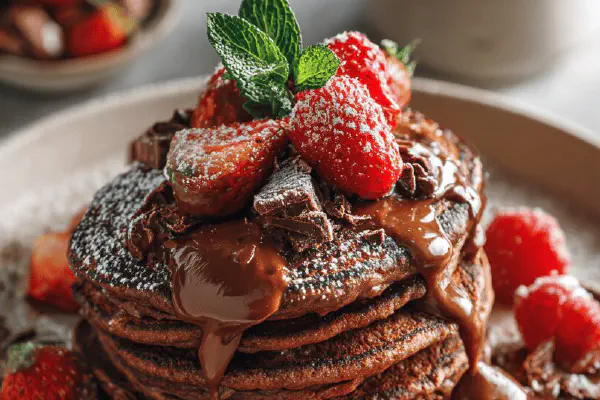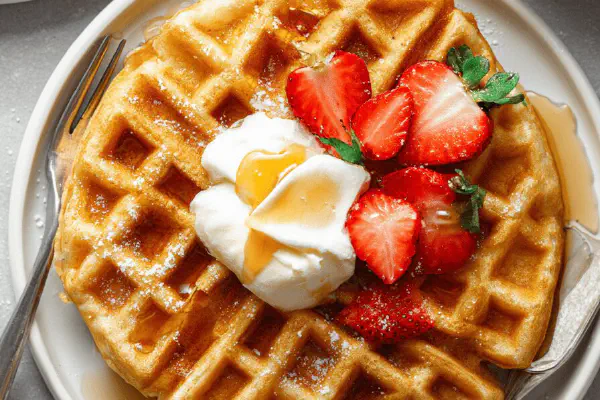Featured Recipe
Buttermilk Pancakes Remix

By Kate
"
Fluffy batter that holds up without overmixing. Flips easy, browns even with right pan heat. Uses half the sugar, swaps out oil for melted butter and buttermilk for kefir—adds tang and richness. Dry: flour, baking soda (not powder), sugar, salt. Wet: eggs, kefir, melted butter. Let batter rest slightly longer to hydrate flour, get better texture. Cook on medium, careful not to scorch. Watch surface bubbles and edges drying—a key cue to flip. Serve quick with whatever’s on hand. Easy tweaks for keeping pancakes light yet substantial. Classic base, but with practical, reliable tricks to nail each step and avoid flat, rubbery results.
"
Prep:
25 min
Cook:
20 min
Total:
45 min
Serves:
12 pancakes
breakfast
baking
pancakes
American cuisine
Introduction
Batter resting. Crucial. Let flour absorb liquids; texture changes subtly. Kefir swap for tang and depth instead of straight buttermilk. Melted butter replaces oil, adds flavor and structure—oil sometimes feels slippery, butter lends richness and slight crisp edges. Dry mix uses baking soda because kefir acid activates it quicker for lift. Watch stirring—not too much to avoid tough bite. Pan temp decides crust color and interior moisture. Hot but not scorching. Bubbles signaling readiness to flip—not too many and not none. Flip by ease not time strictly. Patience here beats rushed cooking. Pancakes with spots that look dry and bubbly edges, not pale wet batter, are ready. Best served right after cooking—reheat ruins texture and this is fresh work. Substitutions are there but keep basics consistent. Wheat flour works, but for gluten intolerances try oat or spelt—note batter thickens differently, adjust liquid slightly. Timing varies by pan and stove, so tactile and visual cues go first. Expect variations but trust feel. Serving with butter and syrup classic, but nuts, cinnamon, or fruit folded in add dimension. So simple, so many small details change everything.
Ingredients
About the ingredients
Flour choice matters. All-purpose standard but high gluten hurts fluffiness. Cake flour too light, less structure. Replacing buttermilk with kefir works well due to acidity activating baking soda quickly—if plain milk, add 1 tablespoon lemon juice or vinegar per cup. Butter melted ensures fat dispersion better than oil in terms of flavor. Vegetable or canola oil okay but pancakes lack that browned edge nuttiness. Sugar kept low to prevent burning on skillet; too much affects color and taste balance. Baking soda instead of powder because acid in kefir activates it immediately, more reliable rise, less risk of metallic aftertaste. Salt levels important; too much flattens taste, too little bland. Adjust based on preference but measured teaspoon best—flavor foundation. Eggs bring leavening and moisture, use large for balance. Pour batter thick not runny; if it’s too thick after resting, thin slightly with water/kefir to scoop easier. Pan must be nonstick or very well-seasoned to flip without tearing. Butter or neutral oil thinly applied but not pooling prevents sticky spots. Mixing quickly keeps batter from browning fingers or setting.
Method
Mix dry
- In a bowl, whisk flour, sugar, baking soda and salt until combined evenly. No lumps but no fussing either. Dry leavening agents mixed in well prevents uneven rise.
- In separate bowl, beat eggs briskly with kefir, then stir in melted butter. Melt just enough butter—hot makes eggs scramble.
- Pour wet into dry. Stir gently just until moistened. Batter should look lumpy and thick—not gloppy or smooth. Minimal stirring avoids gluten build-up, keeps texture tender.
- Let sit 15-20 minutes. Longer rest hydrates flour fully. Important step. Dry spots disappear; batter thickens slightly. Avoid overresting or bubbles decay.
- Heat medium nonstick skillet over medium heat for 90 seconds. Test with a drop of water: should sizzle but not evaporate instantly. If pan smokes, too hot.
- Butter pan lightly before each batch. Spoon ¼ cup batter per pancake, 2-3 pancakes max to keep temperature steady. Wait until bubbles form over surface edges dry and look set—about 2 minutes. Flip carefully; underside should be golden brown. Cook other side 1 to 1 ½ minutes until puffed and cooked inside. Adjust heat if browning too fast or batter remains raw.
- Warm plates and serve immediately. Butter melts into surface; syrup pools in cracks. Fresh berries optional. For texture tweak, fold in blueberries or chopped nuts before cooking.
- Use mild oil if butter browns too fast. Wipe pan between batches for even color.
Mix wet
Combine
Rest
Heat pan
Cook
Serve
Cleanup tip
Technique Tips
Start with dry mix uniform and sifted if lumpy. Wet mix beaten well to incorporate air; bubbles in wet help aeration in batter—a subtle lift. Combining needs a fold method: gently pull sides from bottom to mix, avoiding rapid stirring. Letting batter rest hydrates gluten and starch, essential for rise. Pan temp control: too hot burns outside, inside remains raw. Low heat leads to flat, dense pancakes. Water drop test reliable—should dance and roll off surface. Cooking time flexible but bubbles forming and edges lifting from pan surface are primary flip signals. Flipping too early ruptures uncooked interior; too late means burnt bottom and dry center. Use a thin flexible spatula for clean flips. After flipping, pancakes puff visibly; listen for gentle sizzling, smell buttery aroma. Visual crackles or slight firmness on top means done. Keep pancakes warm on low oven heat if needed; stacking traps moisture—loses crispness. Avoid overmixing batter or overcooking pancakes—both common mistakes for tough texture. If pancakes stick, reassess pan quality or add more fat. For variability, fold in berries or nuts into batter last minute to prevent sinking. Serve immediately to retain structure and warmth.
Chef's Notes
- 💡 Batter rest time, not just a step. Hydration matters. Flour sucks up moisture. Wait for 15-20 minutes. Avoid over-waiting. Dried spots? No good. Too short? Weird texture. Find that sweet spot.
- 💡 For pan heat: medium only. Too hot burns, too low makes dense pancakes. Try a drop of water. If it dances, you’re good. Wait for surface bubbles, edges drying. That’s your flip cue. Don't rush.
- 💡 Incorporate air in wet mix. Bubbles matter. Helps with lift in pancakes. Blend eggs, kefir well before adding melted butter. Melt slowly, don’t scramble eggs, just mix. Then quickly combine with dry.
- 💡 Check flour type. All-purpose works but gluten-heavy types make pancakes tough. For gluten issues? Oat or spelt works well. Adjust moisture as necessary for different flours. Texture varies. Keep an eye.
- 💡 Cook pancakes immediately after batter's prepped. Standing too long makes them dense. Fold in blueberries or nuts before cooking for added texture. Swirl and then cook—don’t overmix.
Kitchen Wisdom
How to tell when pancakes are done?
Look for bubbles on top. Edges start drying. Firmness on top means almost there. Flip when right.
Can I freeze leftovers?
Yes. Freeze well. Just reheat later. Skillet or toaster works. Light butter can help.
Trouble with sticking?
Check pan. Nonstick's critical. More fat might help. If it sticks, reassess temperature or add fat.
Can I use regular milk instead of kefir?
Yes, but add acid. Lemon juice or vinegar works. But may not have same tang.



